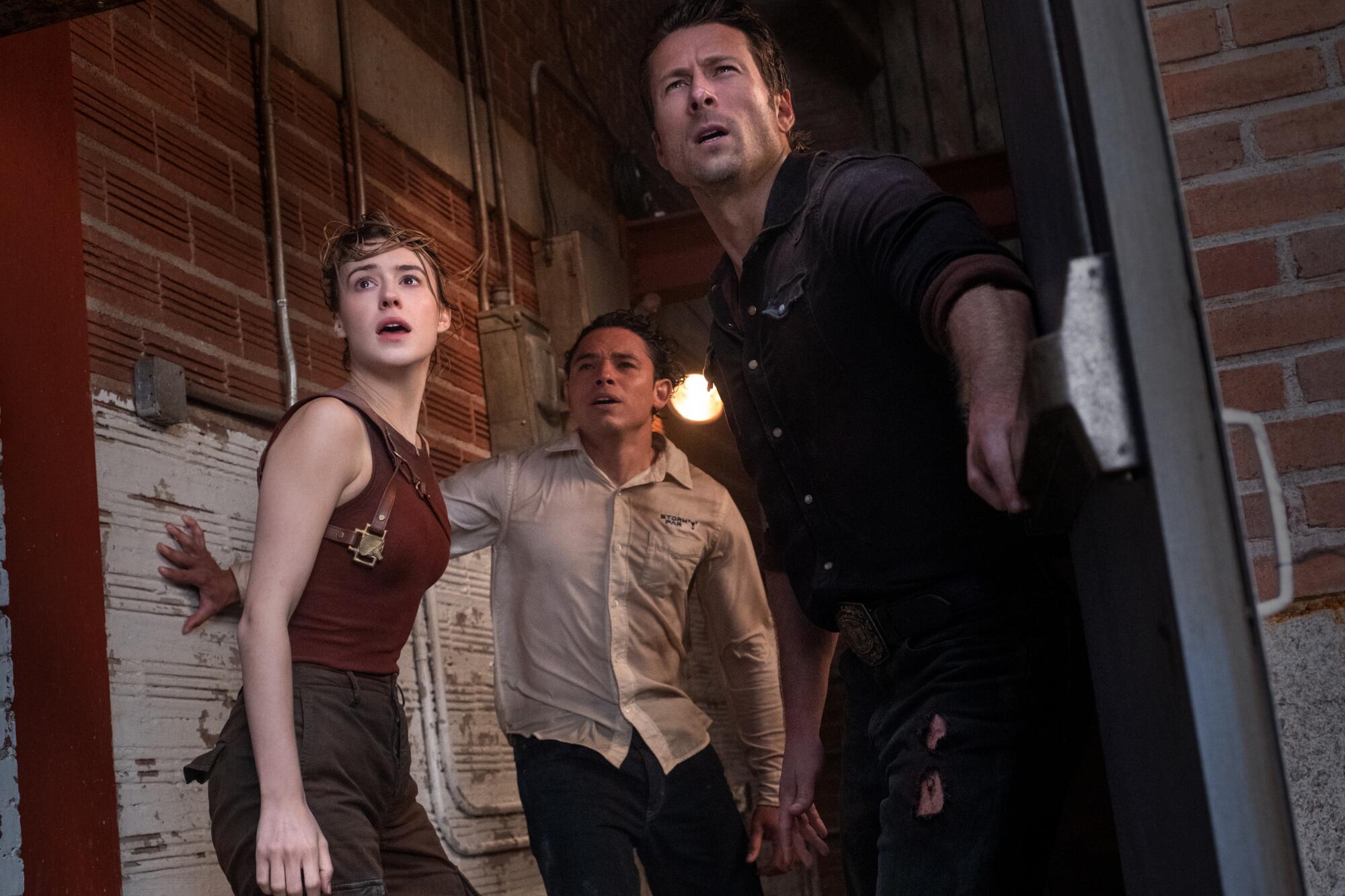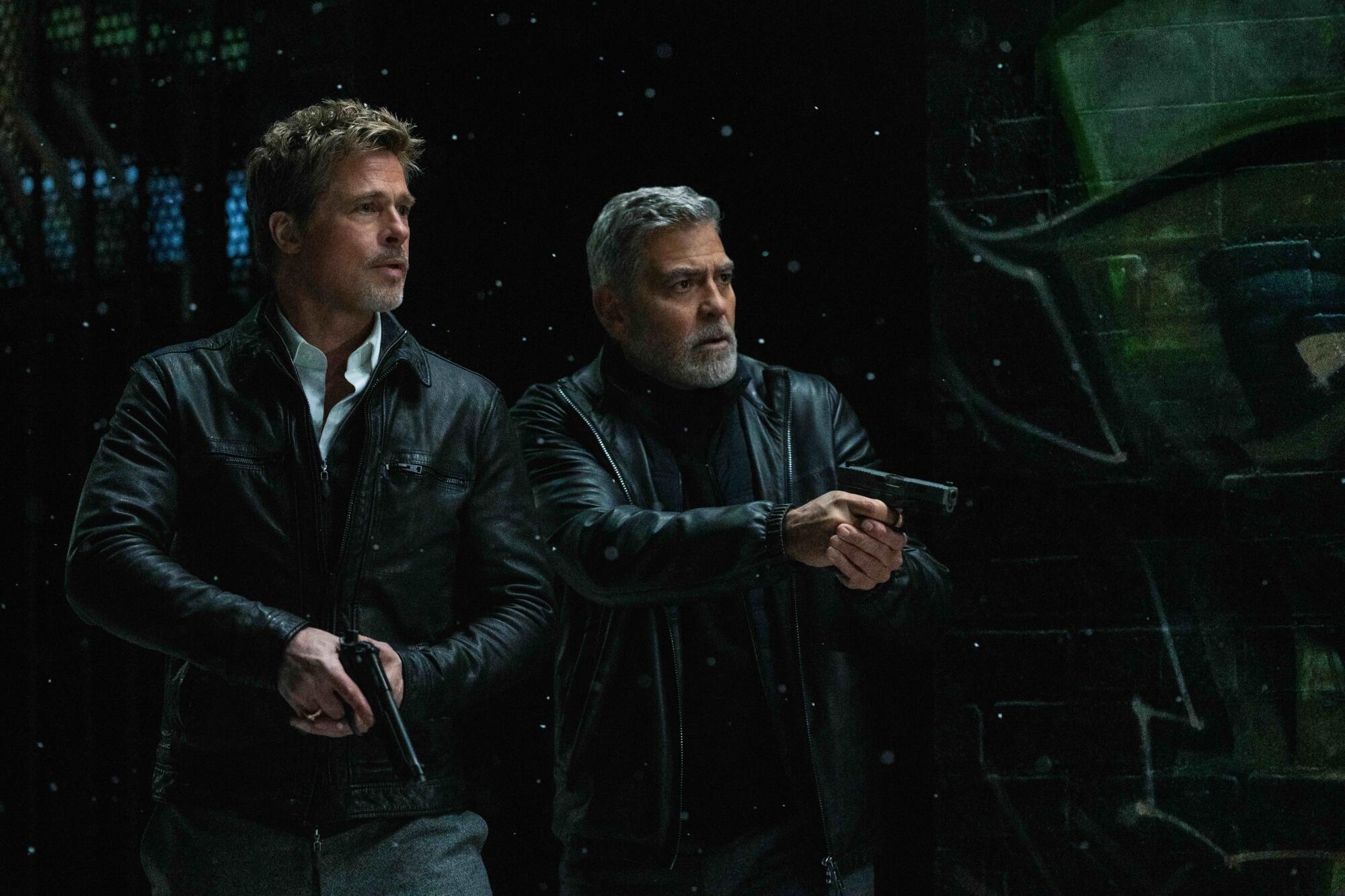
- Share via
Hollywood loves directors who start small and go big. After Christopher Nolan made his first American film, “Memento,” for $9 million, he popularized the now-familiar path from art house to studio lot by helming the $2.5-billion-grossing “Dark Knight” trilogy, followed by last year’s big-budget best picture winner, “Oppenheimer.” Three years ago, Chloé Zhao won an Oscar for directing “Nomadland” before taking a big swing with Marvel Studios’ ensemble adventure “Eternals,” which grossed $402 million worldwide. Damien Chazelle shot his Oscar-nominated jazz-themed “Whiplash” in 2014 for $3.3 million and two years later won the directing trophy for “La La Land,” also jazz-themed ($509 million on a $30-million budget). And before she masterminded 2023’s top-grossing movie “Barbie” ($1.4 billion), Greta Gerwig shot 2017’s “Lady Bird” for $10 million, picking up writing and directing Oscar nominations along the way.
Studios continue to bet that auteurs who make low-budget, high-quality work can figure out how to harness hundreds of VFX artists, designers and stunt people to epic effect. Here’s a look at three indie-rooted filmmakers who scaled up their storytelling talents this year on behalf of spectacle-level entertainments.

Lee Isaac Chung: from “Minari” to “Twisters”
Small: Chung made his autobiographically inspired family drama “Minari” for $2 million in 2020, and it earned six Oscar nominations, including best picture, winning the supporting actress trophy for Yuh-Jung Youn‘s performance, ultimately grossing more than $15 million worldwide.
Big: Chung directed Universal Pictures’ “Twisters,” which had a considerably heftier budget of $155 million. The Daisy Edgar-Jones/Glen Powell tornado disaster movie has grossed $371 million since its summer release.
Making it personal: As a kid, Chung survived a tornado shortly after his family moved to their new home in Arkansas. “This was something my father never considered as a possibility when he moved us into a trailer on this plot of land where he wanted to build his farm,” Chung said. “It didn’t have a storm shelter, so we all loaded up into my dad’s Dodge pickup and drove until we reached an area where we thought we’d be safe.”
Influences: In 1996, Chung saw the original “Twister” in a theater. “I distinctly remember the opening sequence, in which this family is running away from a tornado at night, and I turned to my family and said: ‘Hey! That’s us!’ I feel fortunate that I’m able to follow ‘Minari’ with a movie that feels personal to me despite being very different and much bigger.”
Here’s how ‘Minari’ director Lee Isaac Chung made the action scene of the summer in the new tornado blockbuster ‘Twisters,’ starring Glen Powell and Daisy Edgar-Jones.

Barry Jenkins: from “Moonlight” to “Mufasa: The Lion King”
Small: Jenkins’ 2016 best picture-winning “Moonlight,” based on a semiautobiographical play by Tarell Alvin McCraney, cost $1.5 million and grossed $65 million in worldwide box office.
Big: Disney’s animated prequel about Mufasa’s early days as a youthful cub began production in September 2021 with an undisclosed budget but likely costing about $200 million range based on previous features. In expanding the “Lion King” empire, Jenkins follows another onetime indie talent, Jon Favreau (1996 comedy “Swingers”), who steered the 2019 live-action version of “The Lion King” to more than $1.6 billion at the global box office.
Teamwork: For “Mufasa,” Jenkins enlisted his close-knit team of “Moonlight” collaborators, including cinematographer James Laxton, editor Joi McMillon and composer Nicholas Britell.
Making it personal: Jenkins regularly watched “The Lion King,” which he estimates he’s viewed more than 150 times — while babysitting his younger nephews. “It was probably the thing I had seen the most before I went to film school,” he recently told The Times. “When I was offered the script, reading it allowed me the chance to tap into that — who I was as a fan of movies.”
With two major movies opening next month, filmmaker Barry Jenkins discusses ‘Mufasa,’ ‘The Fire Inside’ and bouncing back from near-catastrophe on ‘The Underground Railroad.’

Jon Watts: from “Cop Car” to “Wolfs” (by way of Spider-Man)
Small: Watts filmed his 2015 Sundance breakthrough, “Cop Car,” near his boyhood home in Colorado for a grand total of $800,000, coaxing maximum humor and suspense from Kevin Bacon as a criminal chasing two mischievous boys who’ve stolen an abandoned cop car.
Big: Leaping from microbudgeted thriller to mass-audience intellectual property in a single bound, Watts directed the Spider-Man trilogy starring Tom Holland as the web slinger for Marvel Studios. The final installment in 2021, “Spider-Man: No Way Home,” grossed more than $1.9 billion on a reported budget of $200 million.
Big stars: Watts wrote and directed “Wolfs” with George Clooney and Brad Pitt cast as rival “fixers” swapping wisecracks while trying to clean up a bloody accident. Filmed over roughly 70 days in New York City for an undisclosed sum, “Wolfs” premiered at the Venice Film Festival and played a limited theatrical run before streaming this fall on Apple TV+.
Influences: Jean-Pierre Melville’s 1967 French crime thriller “Le Samouraï” and the Robert De Niro-Charles Grodin two-hander “Midnight Run” served as inspirations for “Wolfs,” says Watts, who also referenced 2007 fixer drama “Michael Clayton” in his pitch to Clooney: “What if Michael Clayton met Michael Clayton?”
Making it personal: “‘Spider-Man’ was an incredible experience, and I totally take creative ownership over all of those films, but ultimately, ‘Spider-Man’ is always going to be Stan Lee and Steve Ditko’s creation,” Watts said, referring to the comic book’s co-creators. “For me, ‘Wolfs’ was about getting back to the weird space that is my space.”
More to Read
From the Oscars to the Emmys.
Get the Envelope newsletter for exclusive awards season coverage, behind-the-scenes stories from the Envelope podcast and columnist Glenn Whipp’s must-read analysis.
You may occasionally receive promotional content from the Los Angeles Times.










